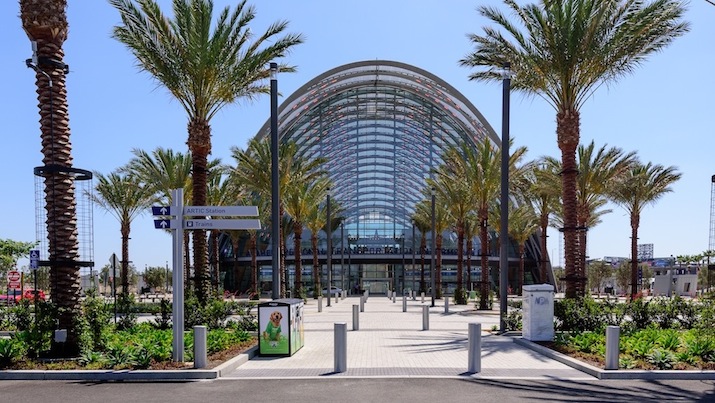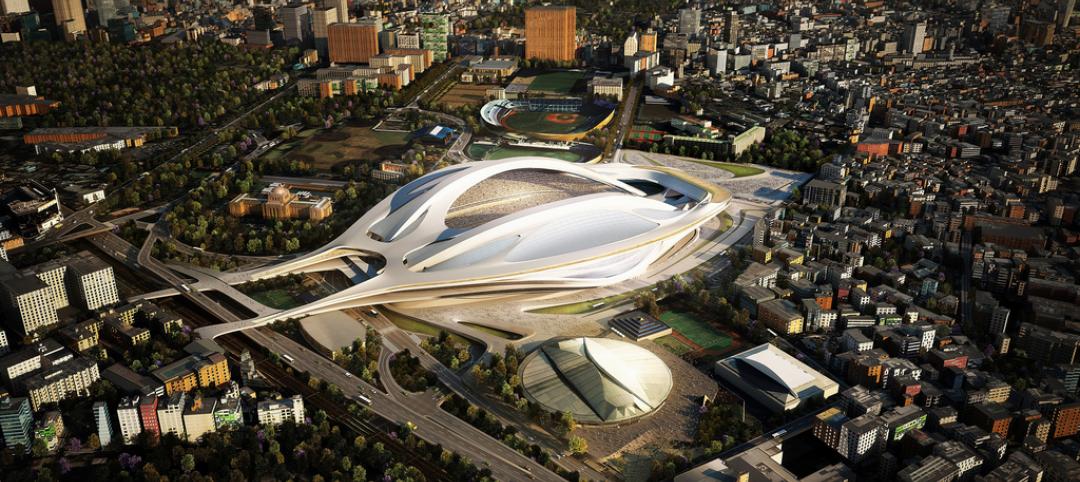HOK, the international architecture, engineering, and planning firm, will promote its President and 25-year company veteran Bill Hellmuth, AIA, to the position of Chief Executive Officer, effective April 19.
Hellmuth, who is the nephew of the firm’s founder George Hellmuth (its initials are an acronym for Hellmuth, Obata & Kassabaum), has been President since 2005. When he steps into the CEO post, he will replace Patrick MacLeamy, FAIA, LEED AP, who has served as HOK’s chief for 13 of the 49 years he’s been with the firm.
MacLeamy will remain as HOK’s chairman. During his HOK career, MacLeamy has overseen the establishment of several HOK regional offices in the U.S. and Asia. He has held leadership roles on several landmark HOK projects, including the Moscone Convention Center in San Francisco and King Khalid International Airport in Riyadh, Saudi Arabia.
In a statement, Hellmuth identified HOK’s “sweet spot” as “the intersection of design excellence and thought leadership, combining design leadership with expertise in specific markets and building types around the world.”
HOK has 1,800 employees (it is 100% employee owned) in 24 offices worldwide. It has current projects in 75 countries.
Hellmuth has a total of 37 years experience in the architecture industry, including a stint with Skidmore, Owings and Merrill. He joined HOK’s St. Louis office in 1991, and two years later was promoted to lead HOK’s Washington, D.C. office. He joined the firm’s executive committee in 2004.
A strong advocate for sustainable design, Hellmuth began integrating sustainability into every project before LEED certification became a benchmark. In 2014 he was named Senior Fellow of the Design Futures Council, and a GSA Design Excellence Peer.
Related Stories
Sports and Recreational Facilities | Jul 23, 2015
Japan announces new plan for Olympic Stadium
The country moves on from Zaha Hadid Architects, creators of the original stadium design scrapped last week.
Green | Jul 23, 2015
NASA: U.S. headed for worst droughts in a millennium
Data from NASA shows carbon emissions could be the driving force behind devastating water shortages and record droughts in the western U.S.
Airports | Jul 22, 2015
MUST SEE: JFK airport taps Gensler to design terminal for animals
Pets can enjoy luxurious spa and grooming services before being transported directly to their flight from the terminal.
Office Buildings | Jul 21, 2015
Finally! There's a workplace trend that’s worth embracing
There’s a realization by corporate real estate executives that in order to create a successful workplace, there must be alignment between their people, their place, and the tools they have to do their jobs.
University Buildings | Jul 21, 2015
Maker spaces: Designing places to test, break, and rebuild
Gensler's Kenneth Fisher and Keller Roughton highlight recent maker space projects at MIT and the University of Nebraska that provide just the right mix of equipment, tools, spaces, and disciplines to spark innovation.
Architects | Jul 21, 2015
Architecture Billings Index at highest mark since 2007
This is the first month in 2015 that all regions are reporting positive business conditions, said AIA Chief Economist Kermit Baker.
BIM and Information Technology | Jul 20, 2015
New stylus brings digital sketching to the next level
Without buttons, users can change the weight of the stylus’ stroke.
Architects | Jul 20, 2015
New York design competition looks to shed the sidewalk shed
New York, which has nearly 200 total miles of sidewalk sheds, is seeking a concept that is practical but that also looks good.
Cultural Facilities | Jul 19, 2015
SET Architects wins design competition for Holocaust Memorial
The design for the memorial in Bologna, Italy, is dominated by two large metal monolithic structures that represent the oppressive wooden bunks in concentration camps in Germany during World War II.
Sports and Recreational Facilities | Jul 17, 2015
Japan scraps Zaha Hadid's Tokyo Olympic Stadium project
The rising price tag was one of the downfalls of the 70-meter-tall, 290,000-sm stadium. In 2014, the cost of the project was 163 billion yen, but that rose to 252 billion yen this year.

















